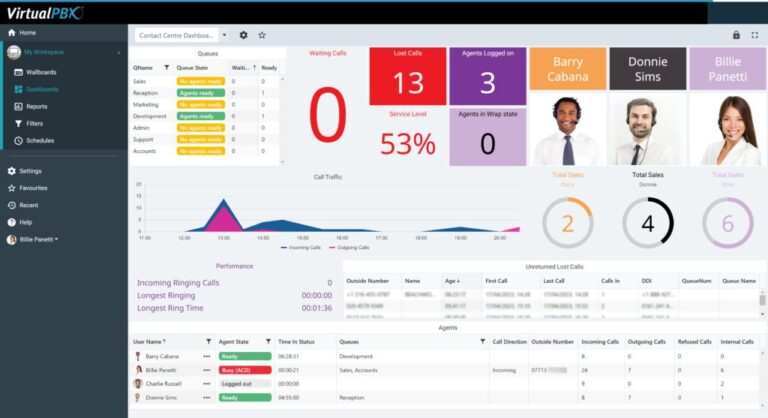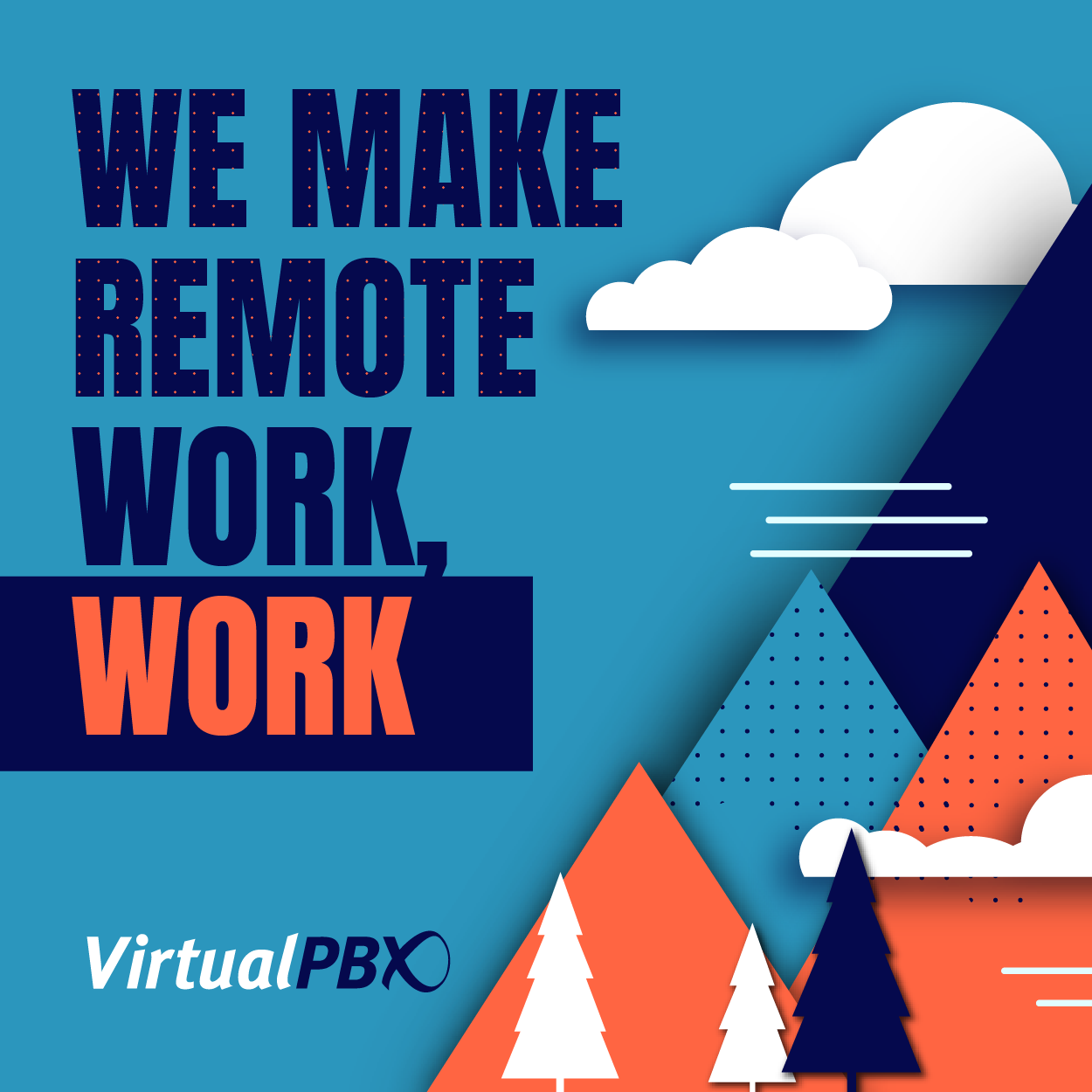Strong call center leadership ensures customers have a great experience within an internal environment of efficiency. Advancements in technology have made it easier than ever for call centers to stay on top of operations to deliver the very best. One such tool is Live Dashboards, which provide call centers with a centralized hub to monitor queues, track agent performance, and review real-time call statistics. With live dashboards, managers make informed decisions that optimize operations without compromising the quality of service. Let’s explore three call center dashboard examples that deliver the insights center leaders need to excel in this critical role.
1. Agent Performance Metrics
Real-time dashboards give managers a clear view of how agents are performing. This makes it easy to spot top performers and those who could use a little extra support. Key performance metrics include:
Call Handling Time indicates how efficiently agents are resolving customer issues. Managers can set benchmarks and intervene when call times exceed expectations.
First Call Resolution (FCR) measures an agent’s ability to resolve customer issues in a single interaction. Live dashboards can provide real-time data on FCR rates, allowing managers to identify training needs.
Agent Availability keeps track of which agents are currently available, on calls, or away. Assign new calls to available agents and optimize workloads instantaneously.
Abandoned Call monitoring allows managers to pinpoint queue bottlenecks or insufficient resources and make the necessary adjustments to reduce those abandonment rates.
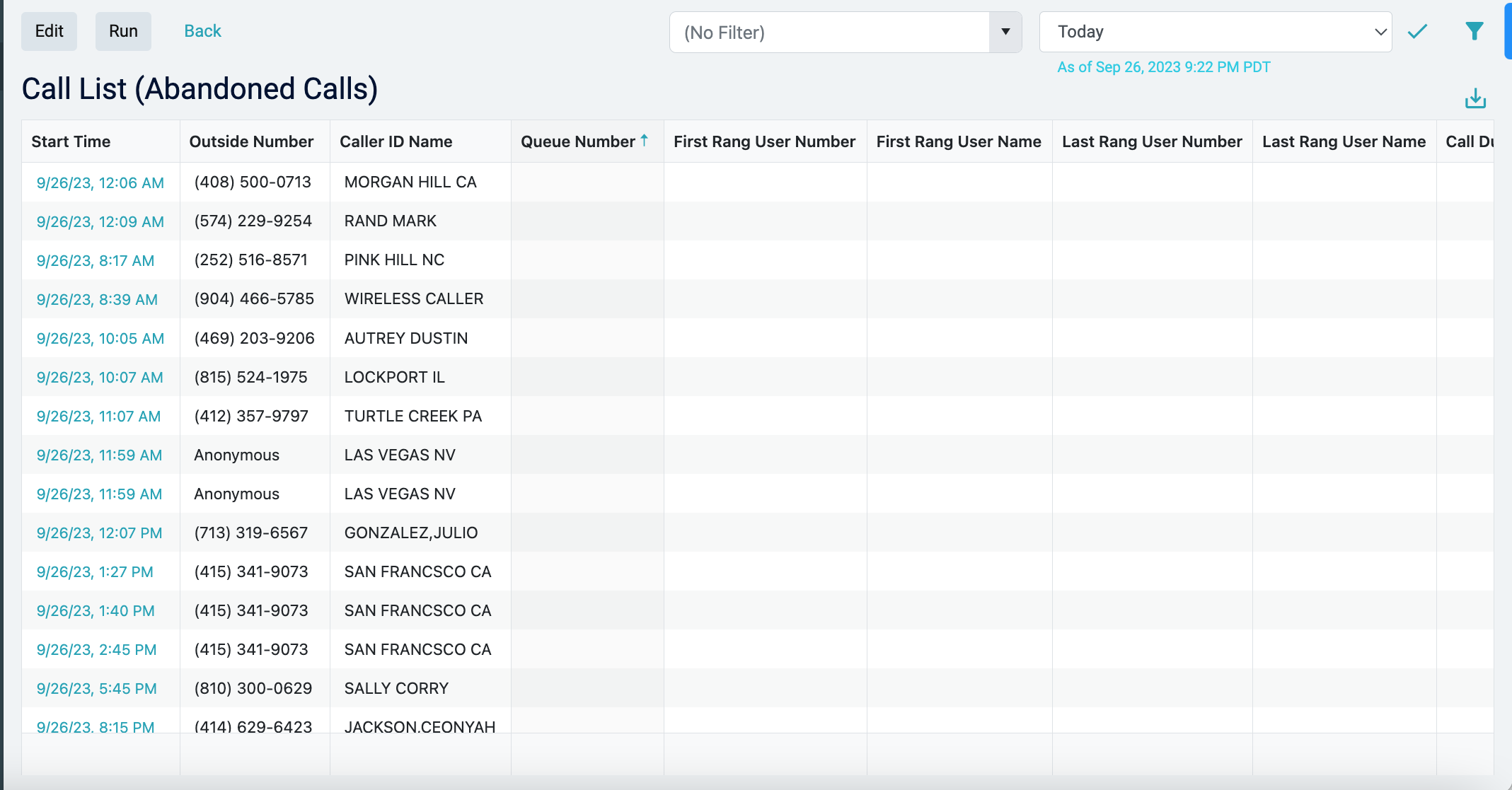
2. Queue Management:
Quick, smooth call handling starts with managing those queues like a pro. Real-time dashboards offer key areas for queue management:
Queue Abandonment Rates identify abandonment trends and take proactive measures to reduce abandoned calls by adjusting staffing or improving call handling procedures.
Service Level Adherence tracks the percentage of calls answered within predefined Service Level Agreement (SLA) limits. Adjust staffing levels or optimize agent performance to meet SLAs consistently and effortlessly.
Monitor Queue Status for a real-time view of the number of calls in each queue, then reallocate resources appropriately during peak call times.
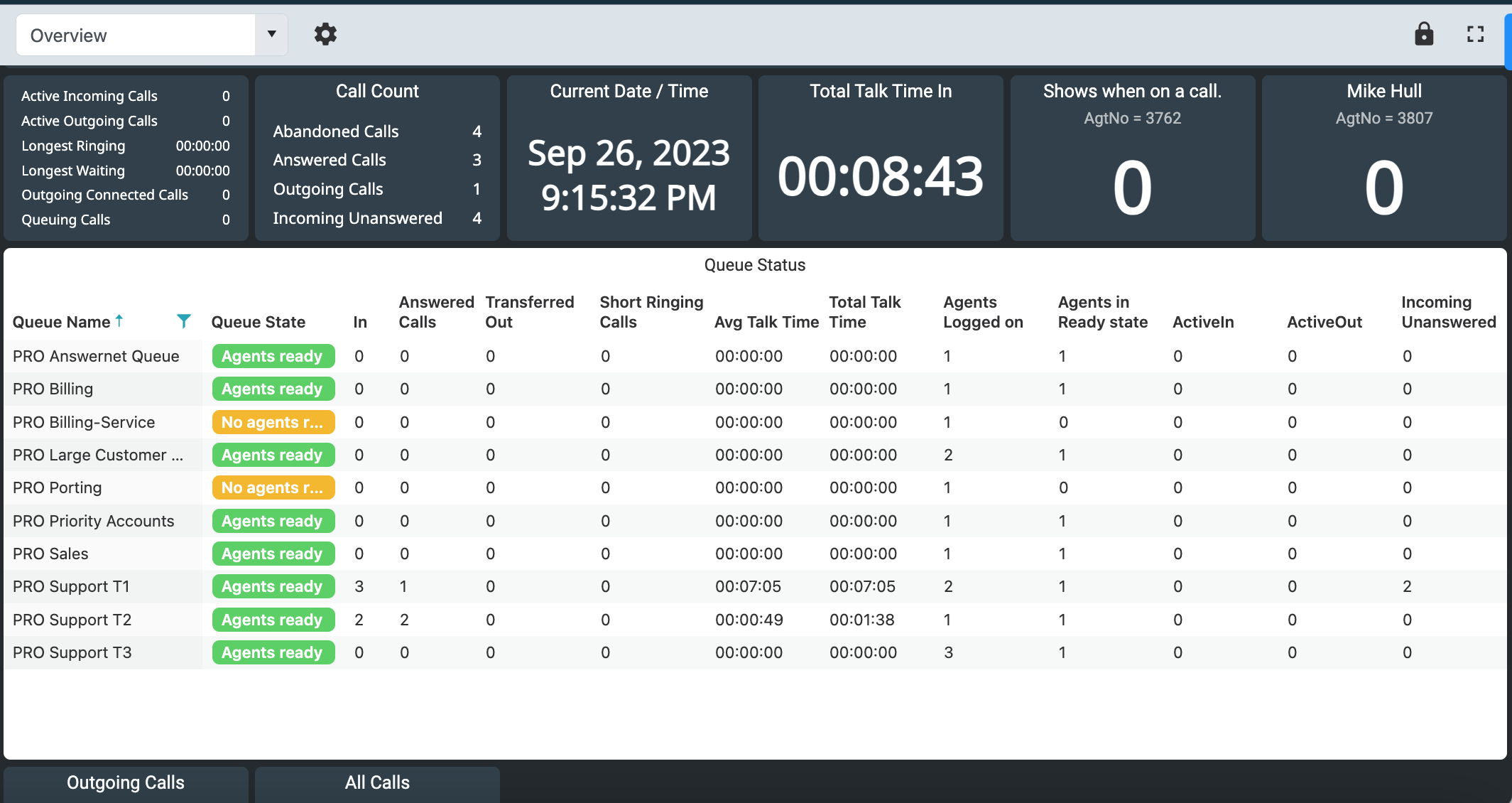
3. Call Center Efficiency Metrics
To run a high-performance call center, managers focus on the big picture. Live dashboards provide insights into overall call center efficiency, allowing for strategic, informed decision-making with speed and confidence. Gauge your call center health with these metrics:
Call Volume trends use historical data to anticipate peak call times and allocate resources accordingly.
Customer Satisfaction Scores integrate customer feedback data into live dashboards to gauge the impact of call center operations and agent performance on customer satisfaction levels.
Agent Workload monitoring is essential to prevent overload and burnout. Balancing call volumes evenly among agents preserves your team while providing an energized and superior customer experience.
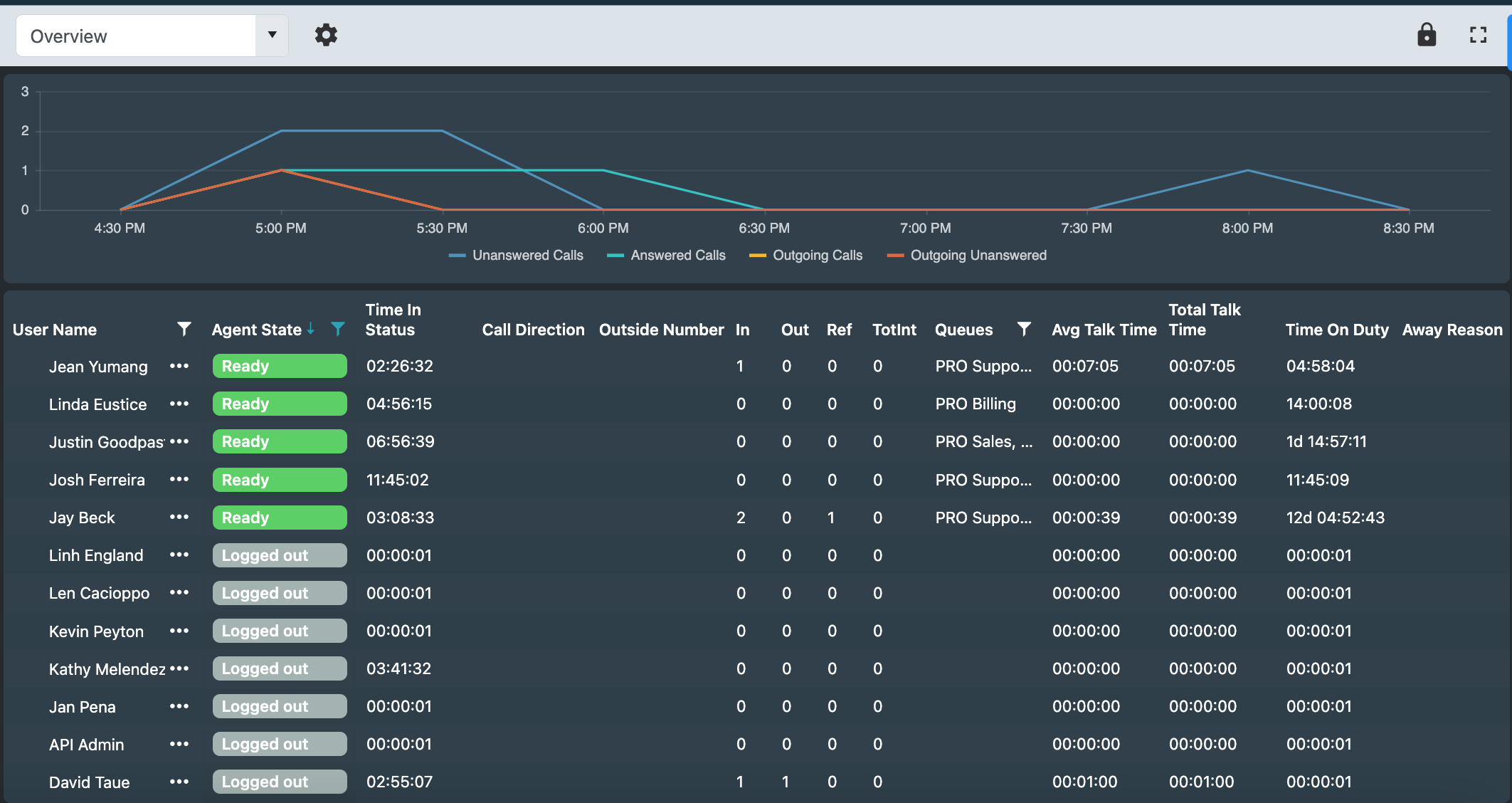
Filtering Data With Real-Time Dashboards
Live dashboards make it simple for managers to find the info they need. A call center agent performance dashboard lets them zero in on key metrics with just a few clicks. Whether it’s agent stats, queue data, or overall efficiency, filters help cut through the noise. You can sort by time, team, call type, or hold times—whatever works best. That way, you can quickly spot trends, catch anything unusual, and take action where it’s needed most.
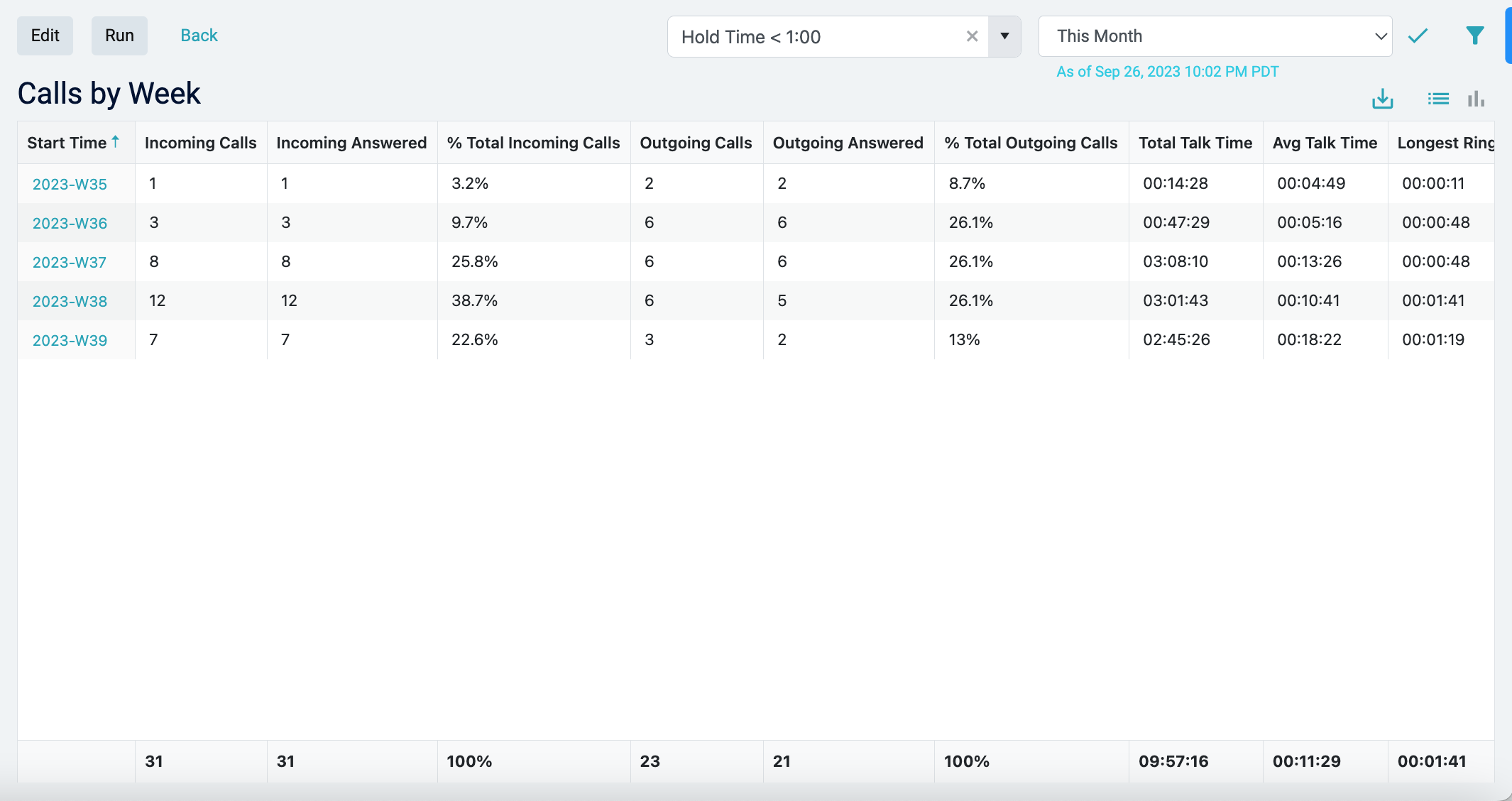
Harness The Power Of Live Dashboards With VirtualPBX
Harness the power of Live Dashboards to monitor, analyze, and optimize your customer-first call center operations. With real-time insights at their fingertips, call center managers can make confident, data-driven decisions to improve agent performance, streamline queues, and ultimately provide exceptional customer service. VirtualPBX Contact Center, can further propel call centers to new heights of efficiency and customer satisfaction, solidifying a reputation as an essential engine within a customer-centric organization.


